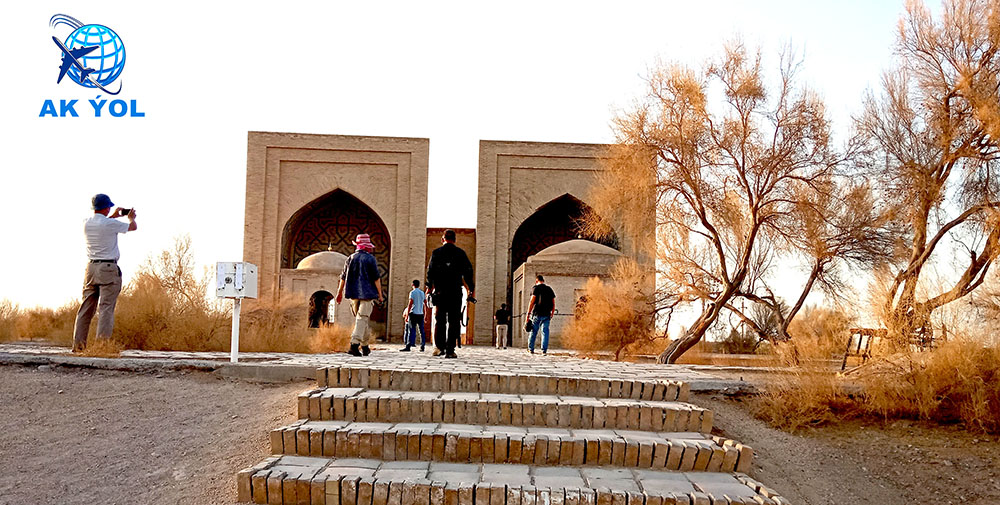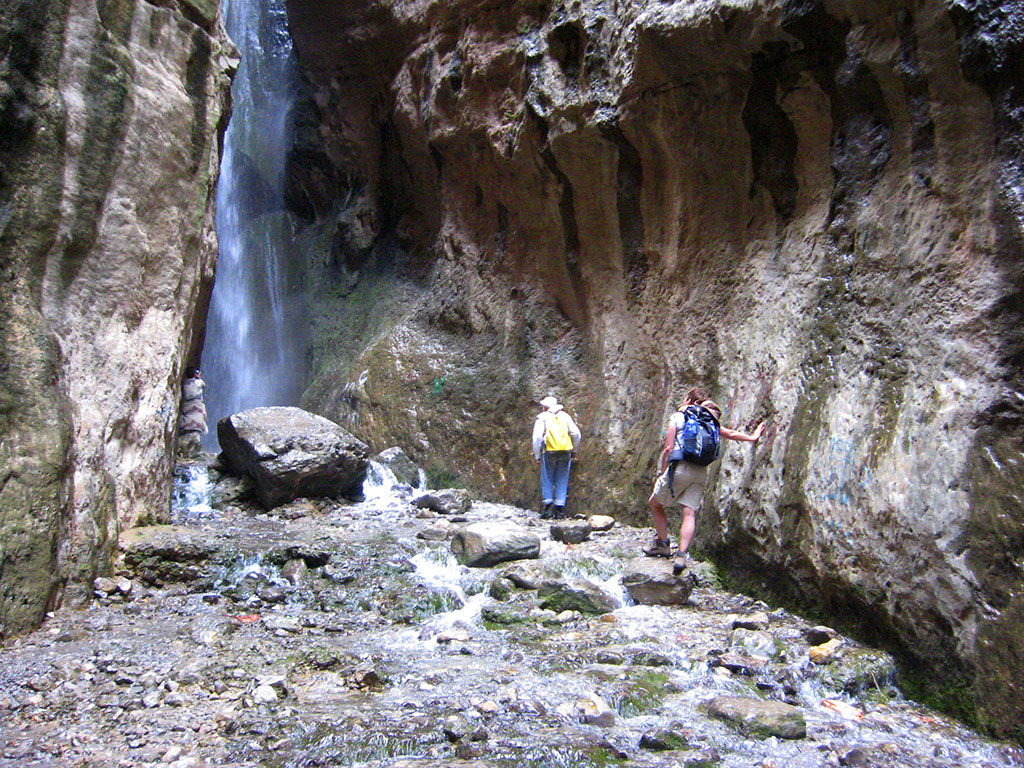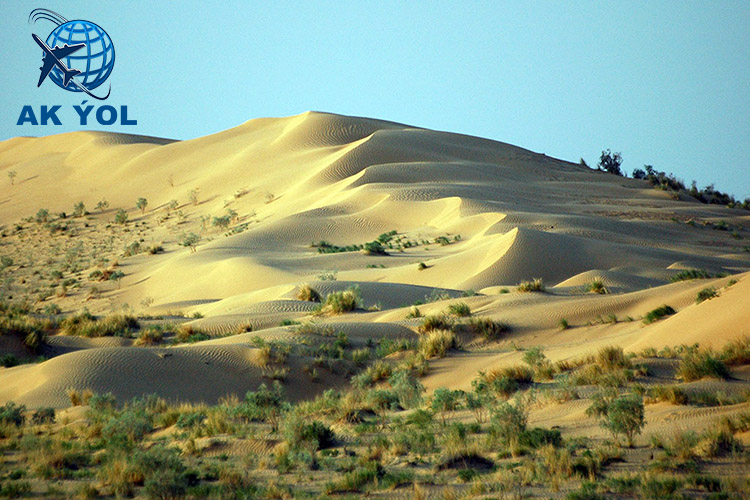Marynyň taryhy-arhitektura ýadygärlikleri
Marynyň taryhy-arhitektura ýadygärlikleri

Ancient Merv 30 km from Mary
Visiting Ancient Merv allows us to explore the urbanization process in Central Asia. The smallest and earliest city in Merv, Erk-Kala (approximately 6th century BCE), occupies only 20 hectares and was surrounded by massive walls and a moat. The only entrance had a ramp leading directly into the city. Georgiana Hermann, who significantly contributed to the archaeology of Turkmenistan, described it as one of the impressive monuments in Merv. The city's walls were continually fortified until the early Islamic period when Erk and Gyaur-Kala were gradually abandoned.
The Seleucids, successors of Alexander, established a second city, Merv (4th century BCE), known today as Gyaur-Kala, which many experts identify with Antioch on the Margus River. The city was constructed on a Greek grid and has a roughly square shape, covering about 360 hectares.
Approximately at the center of the monument, there are the ruins of a 7th-century mosque and a partially ruined sardoba (water reservoir). In the southeastern corner of Gyaur-Kala, an outstanding hill reveals the remains of a Buddhist stupa and monastery. This complex was excavated by Masson in the 1950s, and among the significant finds was the famous "Merv Vase" and a clay head of a massive statue of Buddha.
Two prominent monuments from the Sasanian period are still visible in the area of Ancient Merv: the Great Kyz-Kala and the Small Kyz-Kala (6th-7th centuries). However, the Turkic name (in all Turkic languages, Kyz means "girl") does not reflect the origin of the structures. These rectangular clay fortresses—Koshki—feature interesting architectural designs adorned with wave patterns on the exterior. Various arch forms were used in these constructions.
The Seljuk capital, consisting of a sharistan (medieval citadel) and rabat (outskirts of the medieval city), significantly surpassed Damascus and Jerusalem in size. Today, the Seljuk citadel is called Sultan-Kala. It has an oval shape and covers about 630 hectares. Its layout is still visible in aerial photographs. Among all the urban objects in Merv, perhaps the most significant is the medieval city of the Seljuks.
During the reign of the Seljuk Sultan Sanjar, the Shahriyar Ark—citadel within the citadel, protected by its own walls and moat—was built. Upon visiting Shahriyar Ark, you can see the Keptirkhana—an interesting ribbed structure that has preserved well in the citadel. Its walls still reach a height of about 4.5 meters, though determining the original height of the walls is challenging.
The highlight of Ancient Merv is the visit to the mausoleum of Sultan Sanjar, which still dominates the landscape. This central-domed building without a portal is characteristic of the Khorasan architectural style. The mausoleum was created by Muhammad, son of Atsyz from Serakhs. His name is not found in historical chronicles, but we can find it on one of the medallions under the mausoleum's dome.
Another monument in Merv from the Seljuk period is the mausoleum of Muhammad ibn Zayd, dated by an inscription to 1112-13. It is located outside the medieval Seljuk citadel. It is unclear to whom the mausoleum is actually dedicated. Local legend speaks of Muhammad Said ibn Zayd ibn Ali Zain al-Abidine ibn al-Hussein ibn Ali Talib, who was an outstanding Shiite teacher and a direct descendant of the Prophet Ali in the fifth generation. He died four centuries before the mausoleum was built and was buried in Kufa, modern Iraq. However, his name and construction date are mentioned in the inscription inside the mausoleum. This is an important pilgrimage site in Turkmenistan. Nearby, you can find a sardoba (water reservoir) also built during the Seljuk period. This domed structure was used for rainwater storage, with access to the cistern via a staircase.
A few kilometers south of the ruins of the medieval Sultan-Kala lies the post-medieval city known today as Abdullahan-Kala, built during the Timurid period in this region and surrounded by massive walls and a moat with substantial fortifications. Although it was one of the strongest and best-fortified cities in the area, Abdullahan-Kala never reached the significance of previous urban objects. The remains of the city walls are still impressive; however, the walls, Timurid palace, and other structures in this citadel, as well as the four gates, were in much better condition in the 19th century.
The mausoleum complex of Khoja Yusuf Hamadani (Hamadani) includes a modern mosque and minaret, grave, and the mausoleum of Khoja Yusuf Hamadani (died in 1140), a Timurid divan (portal), and a prayer hall. It is located near the Seljuk citadel. This complex has been largely reconstructed and has become an important pilgrimage site. Khoja Yusuf Hamadani was a famous Sufi scholar of the 12th century and the first among a group of Central Asian Sufi teachers who founded the Naqshbandi order. He was born in 1048-49 in a small village called Bezenjird near the famous Iranian city of Hamadan when Merv was under Seljuk rule.
The Ice Houses (approximately 15th century, Timurid period) are visible from the road between the medieval and ancient cities of Merv. This remarkable conical clay structure was built directly on the ground to store tightly packed snow. Determining the original height is difficult.
The mausoleums of the Ashabs (companions/associates of the Prophet) date back to the period of the Arab invasion of Central Asia in the early years after the death of Muhammad. The tombs of two Ashabs—Al-Hakam Ghaffari (died in 670) and Buraida Al-Aslami (died in 681)—are located here. During their deaths, graves were built; in the 15th century (Timurid era), ayvans were added, and mausoleums were constructed over the graves by Guljemal-khan in the 19th century.
Today, Merv occupies an area of over 1,200 hectares, forming the largest archaeological site in Central Asia. The importance of the monument was recognized in 1999 by UNESCO, which granted Merv the status of a World Heritage Site.








